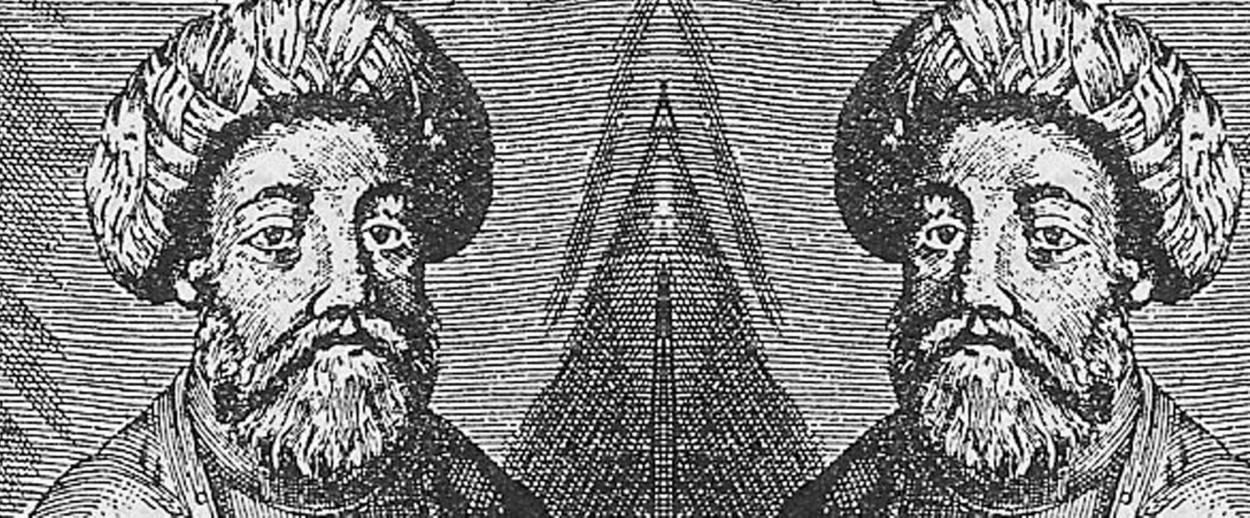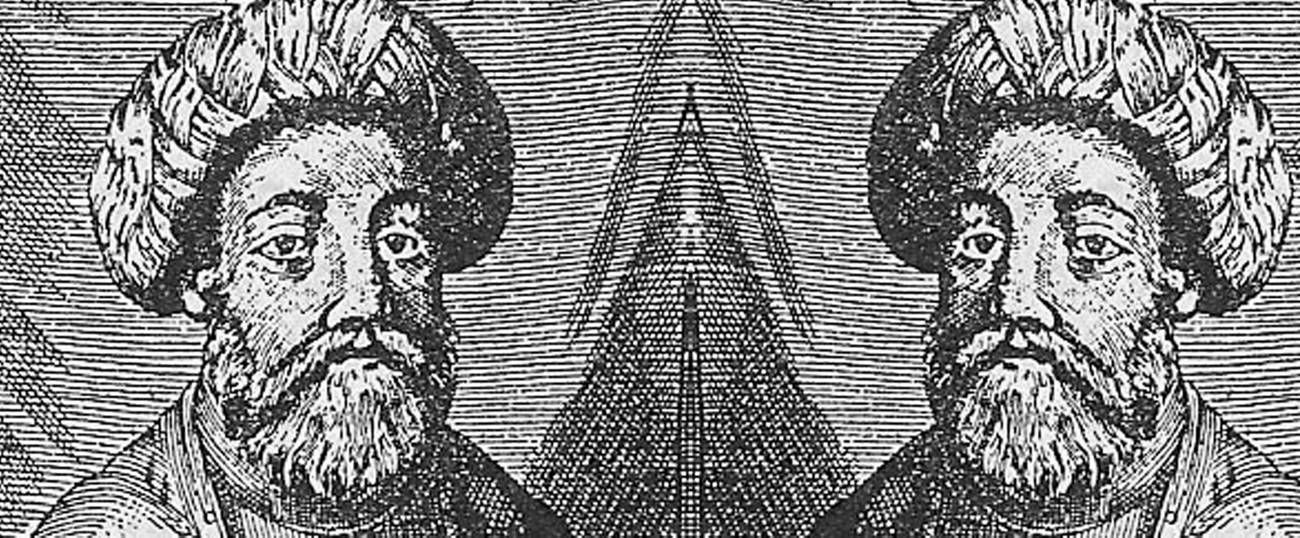Sabbatai Sevi’s Conversion to Islam
A 17th-century ‘holy apostasy’: like Christ’s crucifixion, the fulfillment of a messianic prophecy?




On Sept. 17, 1666, Sabbatai Sevi (1626-1676), the founder of one of the most influential messianic movements in Jewish and world history, converted to Islam. An apostate messiah was a greater paradox for believers than that of a crucified messiah. Only a small group of dedicated believers overcame this cognitive dissonance and established a crypto-messianic sect, better known as the Sabbateans or Dönmes, which sustained their enigmatic identity throughout the centuries and left a deep imprint not only in Judaism but also in Islam, via the Dönmes in the Ottoman Empire, and among Christians, via the Frankists in Poland and Eastern European countries. To some observers, the Sabbatean movement and Sabbateans were the forerunners of Zionism and hence Jewish nationalism; to some others, they were the actors behind Jewish and Turkish modernity and secularism; yet to some others, they were the founder of a new form of Islamic Sufism and Jewish Kabbala.
While his followers were expecting the inauguration of the messianic age during the heyday of the movement, the messiah was arrested and brought in chains by the Ottoman authorities to the Edirne palace with the charge of sedition on Sept. 14, 1666. Visiting Edirne in those days, a French priest, Robert de Dreux, relates that he saw several Jews parading on the streets. Some of them were carrying shovels, spades, and other tools. When he asked them what those tools were for, they replied that they were going to fix the roads on which the messiah was going to walk.
On Sept. 17, 1666, a trial was held before the Sultan Mehmed IV to settle Sabbatai Sevi’s fate. Very rich and colorful narratives about this scene, mostly based on rumor, made their way into the sources, especially those of foreign observers. For example, Paul Rycaut, a British ambassador in the empire narrates that “the Grand Signor would not be put off without a miracle, and it must be one of his own choosing; which was that Sabbatai would be stripped naked, and set as a mark to his dexterous Archers; if the arrows passed not his body, but that his flesh and skin was proof, like Armour, then he would believe him to be the Messiah.” Contemporary Dönme tradition maintains that, during the trial, Sevi’s religious knowledge was challenged by such questions as “What is the nature of soul?” “Did Muhammad ascend to heaven in body or in soul?” and “What did Moses tell Muhammad during his ascension?” As Sevi answered these questions with textual evidence from Jewish and Islamic traditions, Muslim scholars in the meetings admonished him, saying, “You know all of these and yet you are still not a Muslim?”
Sevi surely had a hard time explaining himself in every sense. He knew some Turkish, but he was not fluent enough in that language to pursue a legal/religious argument during the trial. One of the palace physicians, Hayatizade Mustafa Efendi, a Jewish convert known as Moshe ben Abravanel, helped him to make his case. Similar to other sedition and heresy cases, the authorities were ready to punish with death. However, with the involvement of the sultan, who was fond of converting non-Muslims to Islam, the Jewish messianic figure was given another option: conversion.
Coming from a Sephardic background, steeped in the rabbinic tradition, and familiar with the Marrano experience, Sevi was no doubt well aware of the Jewish attitude to apostasy and martyrdom. When he had to choose between martyrdom and conversion, he chose life, for this act could be justified by the Sephardic tradition since the time of Maimonides. However, when some of the Dönmes wanted to return to Judaism in later centuries, the rabbis did not show the same positive attitude toward them, for, unlike the Marranos, they had in the meantime adopted several antinomian practices.
The conversion of the messiah was shocking to the majority of believers, who felt betrayed and returned to their previous lives with a feeling of profound disappointment and despair. His believers nevertheless strove hard to explain the paradox. Once the dust settled around the messiah’s conversion, a few of his believers began to reinterpret his conversion as a sort of “holy apostasy,” a “secret mission,” deliberately undertaken with a particular mystical purpose in mind. According to them, even though the majority of Jews at the time believed that Sevi’s conversion to Islam was a cowardly act of betrayal that almost annihilated Judaism, they interpreted it rather as a necessary step in the messiah’s redemption of the world. The whole point of the Holy Apostasy was tiqqun, not conversion. In this sense, this “holy apostasy,” like Christ’s crucifixion, was seen as the fulfillment of a messianic prophecy.
The doctrine that argues that the redeemer has actually fulfilled his messianic mission by abandoning his or her faith was essentially nihilistic and anti-heroic. Yet for other believers, Sevi’s conversion to Islam was undertaken in order to forestall a wrathful action by the sultan, who in his fury wished to destroy Ottoman Jewry in its entirety. This rumor, however, seems to have been fabricated by the Sabbatean believers who were desperately looking for an explanation for their Messiah’s conversion. The claim that the sultan ordered all Jews to be killed would be entirely contradictory to any known Ottoman practice. Jews were often persecuted and even forced to convert in the neighboring Safavid Empire in the mid-17th century, but this communal threat had no effect on the Jews of the Ottoman Empire.
It is for sure, however, that the Jewish authorities were quite relieved with the ending of the messianic commotion as reflected in Istanbul rabbis’ letter to the Izmir Jews: “And bless the King Sultan Mehmed, because in his days a great redemption was brought in Israel. And be not adverse to the kingdom, may God prevent it, especially all has happened.”
Almost all travelers, missionaries, and non-Ottoman Jews, however, were of the opinion that Sabbatai Sevi and the Sabbateans converted to Islam under duress, while secretly remaining loyal to their previous faith. A Dönme tradition buttresses this position, saying that when he was asked to embrace Islam on pain of death, he whispered to himself: “I convert as long as this soul (can) stays with me.” As soon as he went out from the presence of the sultan, he freed the bird hidden under his garment, and said: “Now the soul is released from the body.” Even today, this story is circulated among the Dönme believers. However, no existing Ottoman source written before the second half of the 19th century casts doubt on the authenticity of Sabbatai and his followers’ conversion, as conversion to Islam was a widespread phenomenon in the Ottoman Empire from its inception.
After the conversion, Sabbatai Sevi’s worldly and spiritual merit was acknowledged by the Ottomans. He was granted a prestigious name, Aziz Mehmed Efendi after his conversion. He was clothed in robes of honor and furs and presented with a few purses of silver; he was also granted the honorary position of a gatekeeper, kapıcıbaşı, with a royal pension of 150 aspers per day. According to a Dönme tradition, several more believers named “İbrahim, Murat, Suleiman, Mahmut, and Yusuf” followed closely in his footsteps. Their wives took the names Zehra, Ayşe, and Melike. Sabbatai Sevi’s wife Sarah came to Edirne a week after the conversion episode and converted to Islam with the name of Fatima. We are not so sure how many believers followed in the footsteps of the messiah after the conversion event. Until Sabbatai resumed his missionary activity among his former believers two to three years later, the number of Sabbatean converts appears to have remained small.
Exhausted after an arduous conversion experience, Sabbatai Sevi found himself partaking in a new social and religious world. He lived another 10 years that were full of ambiguities and complexities stemming from his new identity as Aziz Mehmet Efendi, which began at the Edirne palace in 1666 and ended in Albania in 1676 as Sabbatai Mehmet Sevi. Interpretations around the conversion and his new identity were fashioned and refashioned during those years, by both himself and his believers. The dialectic between his self-perception and the perceptions of his believers, his opponents, and the Ottoman authorities caused his identity to oscillate between and across the traditional boundaries of Judaism and Islam, leading to the emergence of a crypto-messianic sect that came to be known as the Dönmes, who survived until the present day.
***
You can help support Tablet’s unique brand of Jewish journalism. Click here to donate today.
Cengiz Sisman teaches at the University of Houston-Clear Lake. He is the author ofThe Burden of Silence: Sabbatai Sevi and the Evolution of the Ottoman-Turkish Donmes.